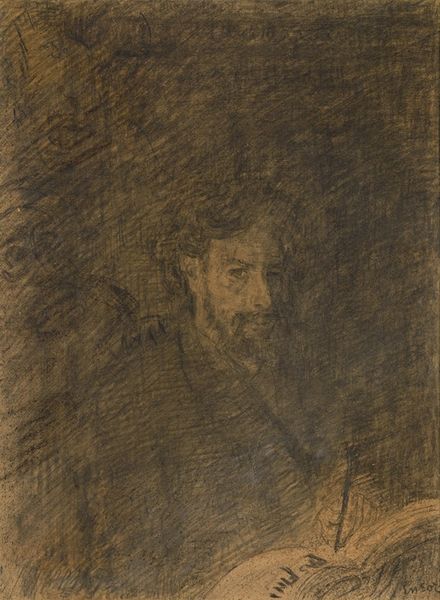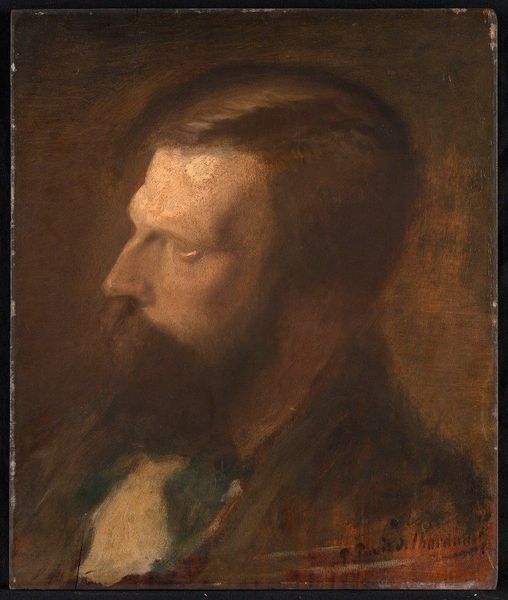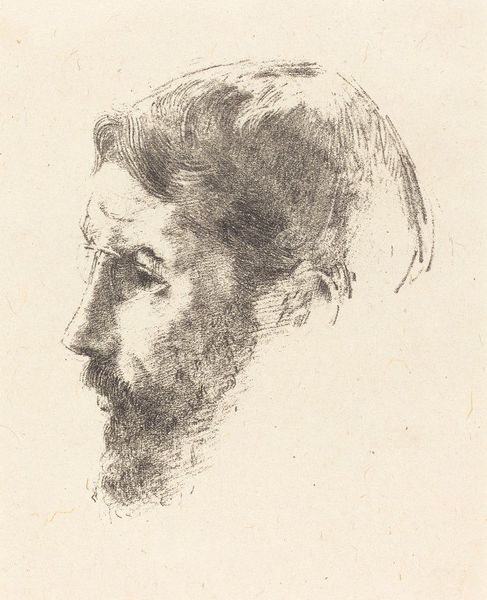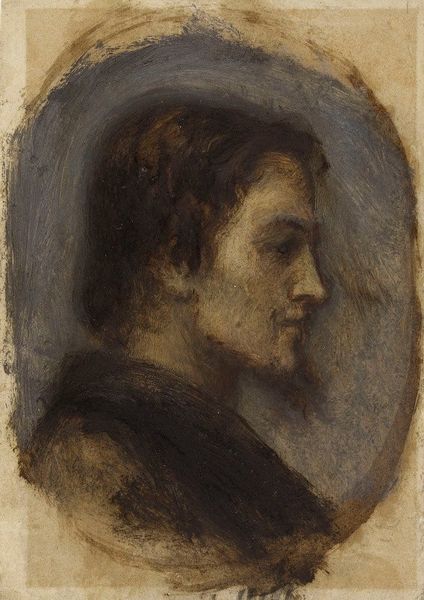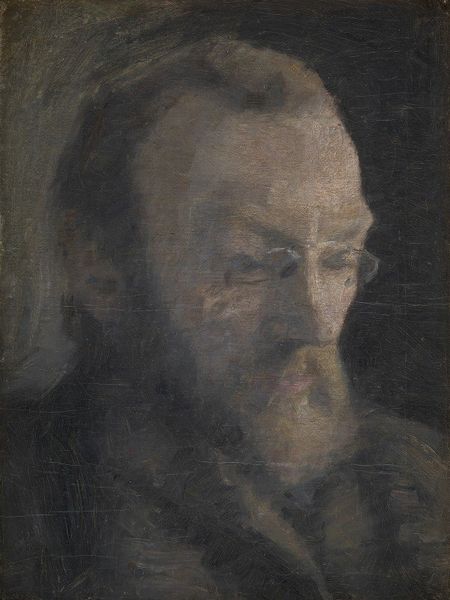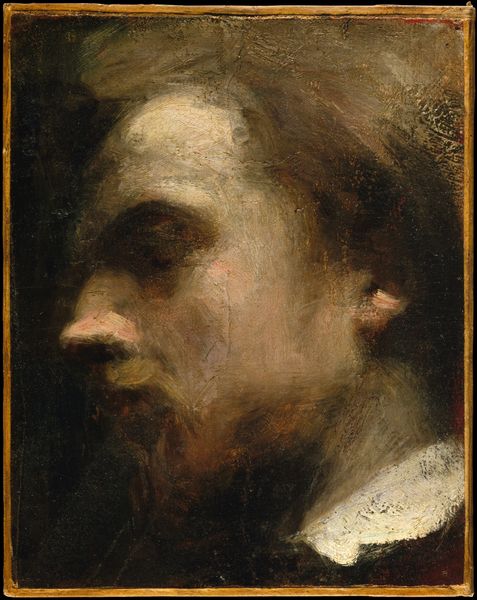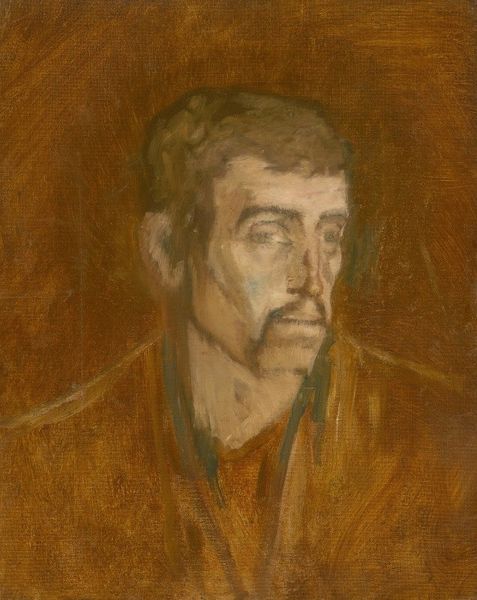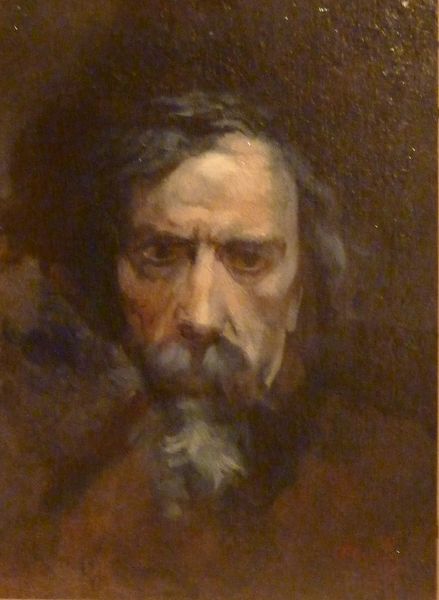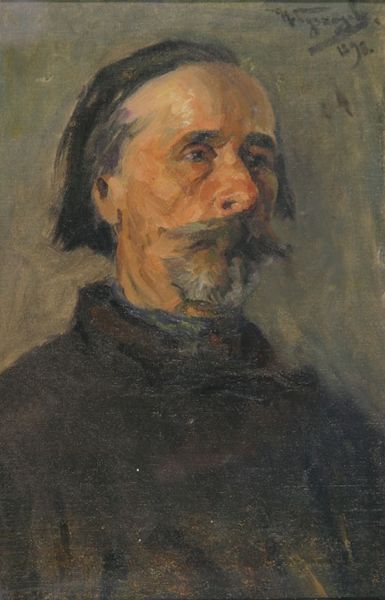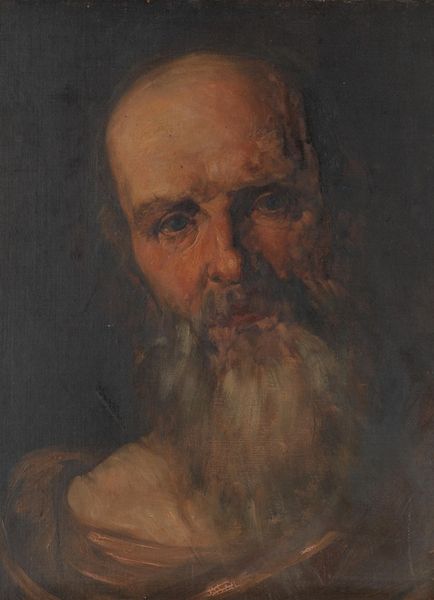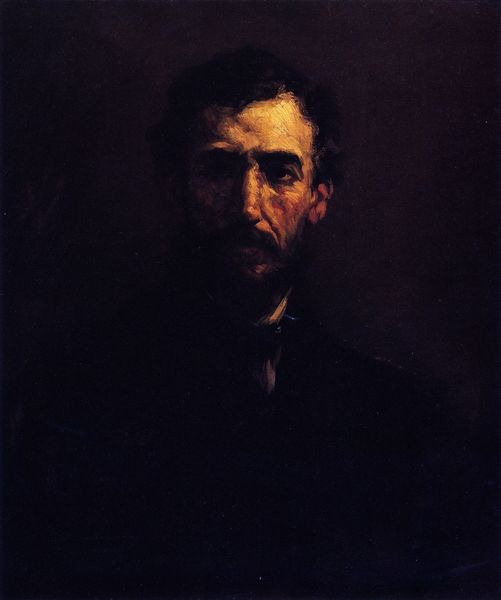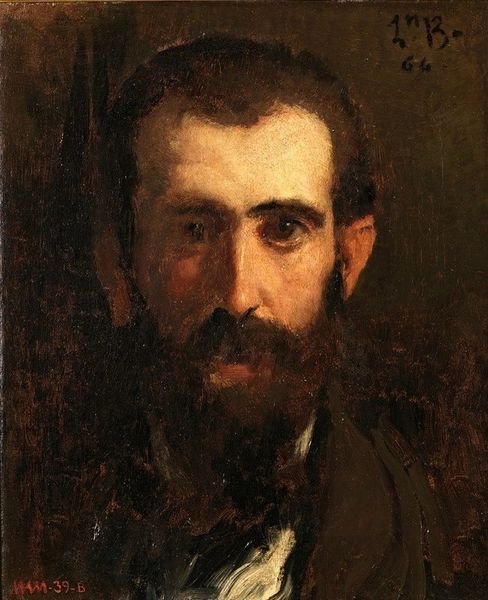
Copyright: Public Domain: Artvee
Editor: Here we have Ladislav Mednyánszky’s "Head of a Thinker," painted sometime between 1880 and 1900 using oil paint, with thick impasto. I'm struck by the portrait’s sombre mood. What do you make of this painting? Curator: The beauty of the piece, I suggest, lies in the surface and the tonal modulations achieved through the impasto technique. Observe the layering of browns and ochres; it gives the face depth but also renders it almost… sculptural. Editor: Yes, I see that. It almost feels unfinished, like a study. Curator: Precisely. It’s the incomplete nature that demands our attention. Note how Mednyánszky leaves certain areas indistinct, allowing the materiality of the paint itself to come to the forefront. Do you notice any intentional distortion? Editor: I hadn't considered that. It seems his brow is slightly exaggerated... Curator: Indeed. Such compositional and technical choices evoke a psychological tension. It invites a conversation on Realism and Romanticism. Do you observe a conflict of styles? Editor: I suppose the rawness nods to Realism but there's also that feeling you mentioned—the psychological tension, or maybe the subject. Curator: One may propose that the artist engages with his work to invite dialogue rather than communicate. What have you taken from our discussion today? Editor: I see how Mednyánszky uses the very act of painting, the layering and incompleteness, to create a specific mood, maybe that tension. It's fascinating. Curator: The canvas prompts questions, doesn't it? Thank you for lending me your keen eye and providing clarity on a difficult work.
Comments
No comments
Be the first to comment and join the conversation on the ultimate creative platform.
